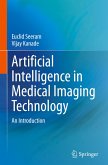This book provides a comprehensive exploration of how artificial intelligence (AI) is reshaping the field of plastic surgery, offering insights into both clinical applications and practice management. With advancements in AI-driven technologies, plastic surgeons can now make more precise diagnoses, plan surgeries with greater accuracy, and deliver personalized patient care.
The book discusses how AI is used across various subspecialties, including burn care, reconstructive surgery, and aesthetic procedures, highlighting the profound impact AI is having on improving surgical outcomes and patient satisfaction. The main topics include AI-driven innovations in areas such as burn treatment, where predictive models assist in wound healing assessments, and reconstructive surgery, where AI tools enhance preoperative planning and intraoperative precision. The book also delves into AI's role in aesthetic surgery, where facial recognition algorithms and body contour simulations enable surgeons to create personalized treatment plans that meet individual patient expectations. Through real-world examples and case studies, readers will gain a deeper understanding of how AI can transform clinical decision-making and surgical techniques. In addition to clinical advancements, the book explores AI in translational and basic research, showing how AI accelerates innovation in tissue engineering and cellular regeneration. It bridges the gap between research and clinical practice, enabling faster adoption of cutting-edge discoveries into surgical settings. Furthermore, the book covers AI in the management of plastic surgery practices, highlighting how AI-powered systems improve patient scheduling, financial management, and data-driven marketing, enhancing the efficiency and effectiveness of running a plastic surgery practice. Two specialized chapters focus on Robotics in AI, exploring how AI-enhanced robotic systems enable surgeons to perform minimally invasive procedures with higher precision, and Big Data in Plastic Surgery, examining how large-scale data analysis improves decision-making, identifies trends, and personalizes treatments based on patient-specific data. Finally, the book addresses the ethical and regulatory challenges surrounding the integration of AI into plastic surgery, including data privacy concerns, algorithmic biases, and future regulations. It closes by examining emerging trends in AI, such as augmented reality and AI-enhanced training tools, offering a look into the future of plastic surgery.
This book is essential reading for plastic surgeons, researchers, healthcare administrators, and medical professionals interested in leveraging AI to advance their practices and improve patient outcomes. Whether you are seeking practical AI applications for surgery or interested in the management side of running a practice, this book offers valuable insights into the future of AI in plastic surgery.
The book discusses how AI is used across various subspecialties, including burn care, reconstructive surgery, and aesthetic procedures, highlighting the profound impact AI is having on improving surgical outcomes and patient satisfaction. The main topics include AI-driven innovations in areas such as burn treatment, where predictive models assist in wound healing assessments, and reconstructive surgery, where AI tools enhance preoperative planning and intraoperative precision. The book also delves into AI's role in aesthetic surgery, where facial recognition algorithms and body contour simulations enable surgeons to create personalized treatment plans that meet individual patient expectations. Through real-world examples and case studies, readers will gain a deeper understanding of how AI can transform clinical decision-making and surgical techniques. In addition to clinical advancements, the book explores AI in translational and basic research, showing how AI accelerates innovation in tissue engineering and cellular regeneration. It bridges the gap between research and clinical practice, enabling faster adoption of cutting-edge discoveries into surgical settings. Furthermore, the book covers AI in the management of plastic surgery practices, highlighting how AI-powered systems improve patient scheduling, financial management, and data-driven marketing, enhancing the efficiency and effectiveness of running a plastic surgery practice. Two specialized chapters focus on Robotics in AI, exploring how AI-enhanced robotic systems enable surgeons to perform minimally invasive procedures with higher precision, and Big Data in Plastic Surgery, examining how large-scale data analysis improves decision-making, identifies trends, and personalizes treatments based on patient-specific data. Finally, the book addresses the ethical and regulatory challenges surrounding the integration of AI into plastic surgery, including data privacy concerns, algorithmic biases, and future regulations. It closes by examining emerging trends in AI, such as augmented reality and AI-enhanced training tools, offering a look into the future of plastic surgery.
This book is essential reading for plastic surgeons, researchers, healthcare administrators, and medical professionals interested in leveraging AI to advance their practices and improve patient outcomes. Whether you are seeking practical AI applications for surgery or interested in the management side of running a practice, this book offers valuable insights into the future of AI in plastic surgery.








